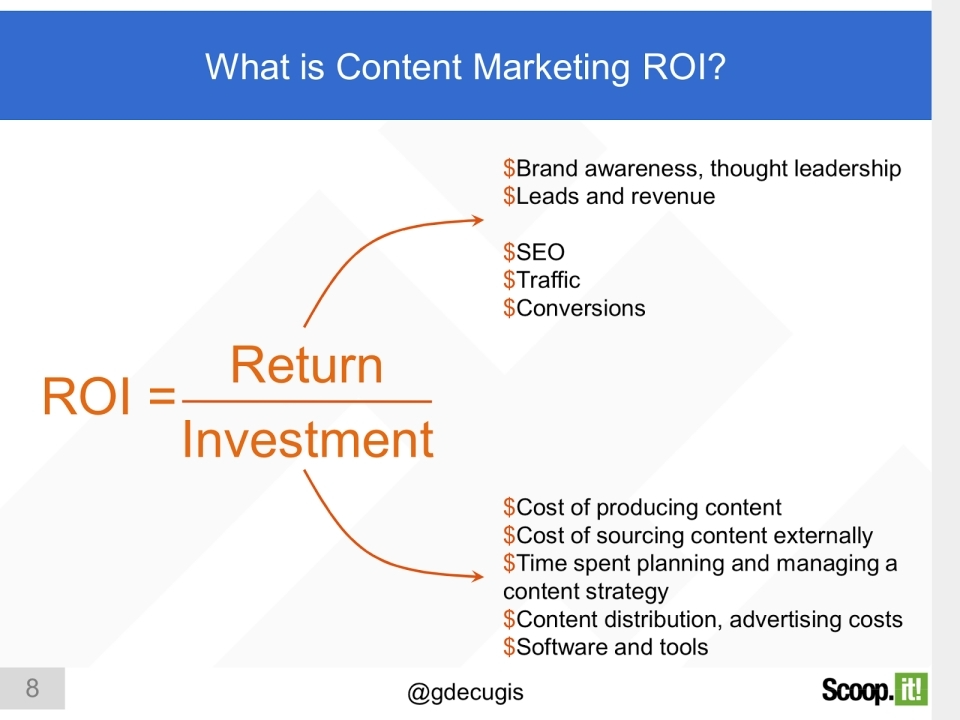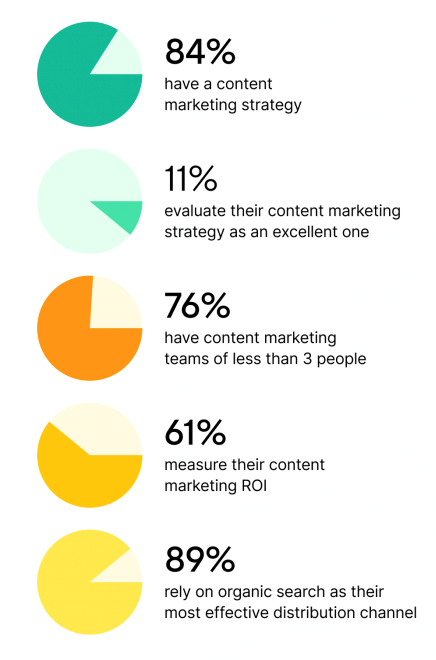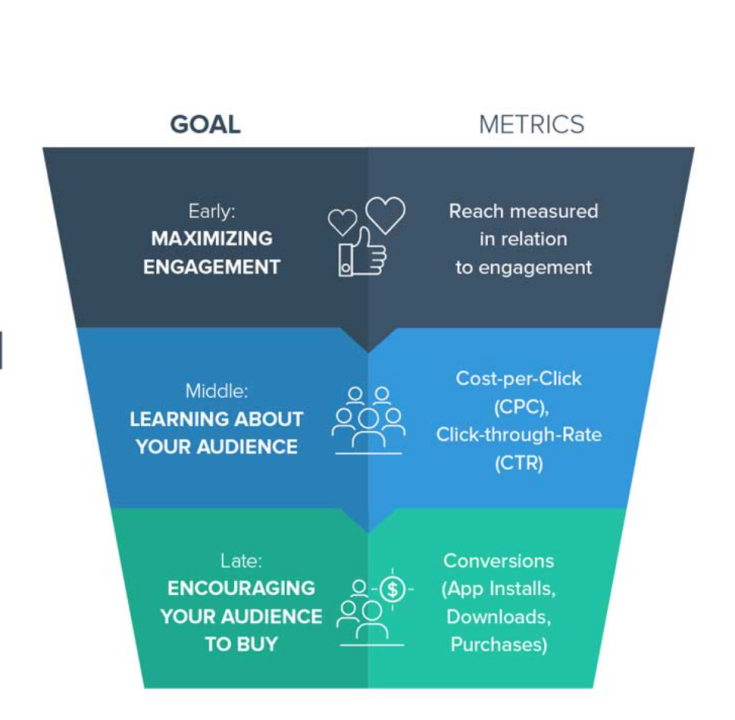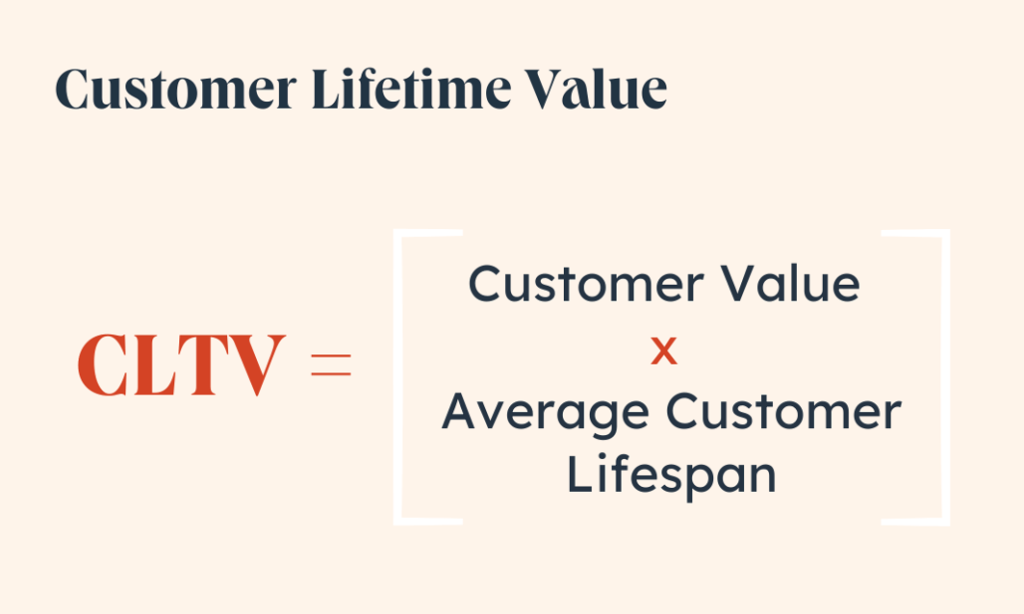Measuring Content Marketing ROI: 6 Success Metrics to Help Simplify the Process

“Great content is the best sales tool in the world.”
These are the words of Marcus Sheridan, an international keynote speaker, marketing consultant, and author who has been called the web marketing guru by the New York Times. They must hold some truth, which is why more and more businesses are willing to increase their content marketing budget in 2023.
While it’s remarkable progress, some businesses hesitate to invest in content marketing. When asked why, they often mention how measuring ROI of content marketing is a challenging task. And they’d much rather invest their resources in marketing strategies with a clearly defined ROI.
Are you a content marketer struggling to show your clients tangible content ROI? Or are you a business owner looking for reasons to start investing in content marketing? In either case, we’re here to help.
In this blog, we’ll introduce you to six effective success metrics that you can use to measure and analyze the content marketing ROI of your business. Let’s get started!
Content Marketing ROI: What Does it Mean?
Whether you’re a marketer or a business owner, you’d be no stranger to the concept of return on investment or ROI. It is a metric to calculate the profit they make in relation to the expenditure incurred.
Content marketing ROI isn’t very different from regular ROI; only here, the focus is on profits and expenditures of the business’s content marketing efforts.
Given below is a visual representation of what constitutes a return and investment in calculating your content marketing ROI.

How can calculating content marketing ROI can be useful?
What’s the point of measuring the ROI of content marketing? How does it prove to be useful? We have not one but two answers to your question. Keep reading to find out how:
- To evaluate the success of your content marketing strategy
The core purpose of measuring the ROI of any object or strategy is to evaluate its performance and judge whether it’s a success or a failure; content marketing ROI is no exception to this rule.
The analysis of the ROI will give you clarity about the marketing efforts that are paying off, those that are hit-and-miss, and the ones that are ineffective.
This assessment will not only help you alter your current strategy but will also provide you with valuable insights for the foundation of your future strategies.
- To justify your content marketing budget
As a content marketer, you might need to get your marketing budget approved by your superiors from time to time. Making your case for an increased budget can be problematic if you have no tangible proof to justify it.
That’s where calculating your content marketing ROI comes into the picture.
With a content marketing ROI report handy, you can swiftly demonstrate to them the value of your content marketing efforts and the results they drive.
Once they’ve witnessed the impact of your strategies first-hand, they’d be more than happy to provide you with the resources and funds you require.
6 Key Metrics to Measure Your Content Marketing ROI
You must have realized by now how essential measuring your content
marketing ROI is to analyze its performance. Despite that, many businesses still don’t prioritize it.

A survey conducted by the iED found that only 61% of businesses measure their content marketing ROI. And when they asked the rest of the 39% why they hadn’t started the practice yet, their response was the lack of clearly-defined ROI metrics.
Having recognized businesses’ struggle in measuring their content marketing ROI, we’ve decided to help resolve their issues. Below, we’ll talk about six key success metrics that you can use to measure the ROI of your content marketing strategy. Check them out:
1. Website traffic
We’ll start with the metric you’ll find the easiest to measure – website traffic. It is often the first spot for the interaction of your target audience with your brand. Having its complete ownership, you also get access to unlimited customization options that you can use to best reflect your vision and USPs.
Furthermore, websites also offer ample opportunity for creative interactions with your potential customers in the form of blogs, custom forms, newsletters, and more.
Measuring the traffic on your website is fairly simple today; Google Analytics can do it all for you. You can use it to measure the total visits and page views on your website and the source of traffic, audience demographics, and bounce rates.
Other important website traffic analytics that you should pay attention to include the following:
- Number of unique sessions
- Returning traffic
- Average time spent on
- Popular landing pages
- Referral traffic
- Content production: Volume and cost
As long as we’re on the subject of websites, let’s talk about what makes them rank high on search engines. While there are several factors that play a role here, content is the most important one.
It is the fundamental element of content marketing, which makes it a crucial metric to measure your content marketing ROI. There are two aspects of content that you need to analyze in content production: volume of production (or quantity) and cost of production.
The first part involves clearly defining the total content output in a month, including different content formats and distribution channels. If you practice creating content calendars for your business, you’d already have all these details.
Now, the second part focuses on the cost of content creation. This includes the payment of the full-time staff and creators (writers, designers, editors) you work with on a freelance/contractual basis. Other expenses associated with content distribution and promotion are also included with it.
Once you’ve figured out the cost of content production, you can compare it with the revenue content generates to estimate your content ROI. This, in turn, will lead to generating a more accurate content marketing ROI.
- Engagement on social media platforms
All marketers would agree that social media has emerged as a powerful marketing tool in the last decade. In addition to providing businesses a platform to engage with their customers – both current and potential – in real-time, it also helps increase brand awareness and build trust among customers.
However, measuring content marketing ROI from social media platforms can be tricky because it’s not primarily in the form of revenue. Take a look at the funnel below to understand the link between social media engagement and ROI at different stages of marketing:

Here’s a question that must’ve crossed your mind as a marketer: How can you calculate your marketing ROI from social media platforms?
The answer is simple; the reach, shares, and engagement on social media content determine its success. Luckily, all major social media platforms – such as Facebook, Instagram, and Twitter – have their own in-built analytics tools.
Much like Google Analytics, these tools can provide you with various actionable insights about the performance of your social media marketing strategy. We’re listing some of the essential ones below:
- Reach and impressions
- Engagement metrics
- Audience demographics
- Referral traffic
- Competitor analysis
4. Search Engine Optimization (SEO)
According to Think with Google, 51% of online shoppers use Google to research a product or service they plan on purchasing online. This says a lot about the shopping tendencies of your potential customers.
Every time an online shopper needs to buy something, search engines are the first place they turn to. What does this mean for you? A higher SERP ranking of your website can increase the chances of your business making sales online incredibly.
But how will you use SEO to measure your content marketing ROI? The first step of this process involves a technical audit of your website. This evaluation’s goal is to identify the issues that might impact the SERP ranking of your website negatively and fix them.
The major elements are evaluated in a technical audit:
- Website speed
- Website security
- Content quality
- Code quality
- URL structure
- Mobile-friendliness
Consider these factors when using SEO as a metric for measuring your content marketing ROI.
- Keyword ranking
Keywords are essential to improve your website’s SEO performance. A number of free tools can provide you with actionable insights on keyword data, including Google Trends, Google Keyword Planner, and Search Console.
- Website authority
Analyzing your website authority involves measuring the relevance and importance of your website in a particular niche, domain, or industry. Here are some pointers that determine your website authority:
- The age and history of your website
- Its social media presence
- The quality and relevance of content on the website
- Number of backlinks pointing back to it
5. Conversion or sales rate
Of all the metrics that we’ve talked about here, the conversion and sales rate impact your marketing ROI most closely. It refers to the percentage of potential customers who end up purchasing your goods and services, often as a consequence of your content marketing efforts.
Here’s an example to further enhance your understanding of conversion or sales rate:
If ten unique visitors landed on your website today, out of which only three made the purchase, that would make the sales rate of your business 30%.
Tracking the conversion or sales rate of your business is vital because it helps you identify which content marketing strategies are working well for the customers and which aren’t. Based on this metric, you can alter and improve your strategies to make content marketing more effective.
6. Customer Lifetime Value (CLTV)
We’ve just covered the purchases made by a customer on your website above. However, what about the purchases that they can potentially make in the future? Have you taken that into account?
A Customer Lifetime Value (CLTV or CLV) can be defined as the prediction of the total revenue a business can generate from a single customer throughout the course of their relationship. Unlike the other metrics we’ve discussed so far, CLTV focuses more on long-term profitability.
And how is CLTV measured? Here’s the formula you can use to calculate it:

A thorough understanding of the CLTV can help devise strategies for customer acquisition and retention. This, in turn, can impact your content marketing ROI positively in the long run.
Key Takeaways
- The lack of a standardized approach to calculating the ROI on content marketing results in businesses being hesitant to invest in content marketing.
- Content marketing ROI focuses on measuring the profitability of content marketing in relation to the expenditure incurred for the same.
- Calculating content marketing ROI helps evaluate the success of your content marketing strategies and justify its budget.
- The key metrics that you can use to measure your content marketing ROI include website traffic, content production, social media engagement, SEO, conversion rates, and customer lifetime value (CLTV).
Final Thoughts
According to Demand Metric, content marketing generates three times the number of leads generated through traditional marketing. Moreover, the former is also 62% cheaper than the latter.
In light of these facts, it wouldn’t be wrong to assume that content could be the future of marketing. Content marketing is, therefore, the need of all businesses today, regardless of their size or industry.
One major setback that most marketers face in content marketing is the lack of clearly-defined metrics to help them measure their content marketing ROI. This blog highlights six success metrics that solve that problem for you.
FAQs
The following are the 4Cs of content marketing:
Context: Understanding your target audience’s mindset, preferences, and interests.
Content: Creating high-quality and relevant content for your target audience.
Consistency: Creating and following a consistent schedule of publishing content to build a lasting presence in the mind of your target audience.
Conversion: The ultimate goal of converting your target audience into your customers.
No, it isn’t. Content marketing has been around for much longer than digital media, which is why both online and offline content distribution is part of the process.
Some common examples of content marketing include billboards, leaflets, seminars, and product demonstrations.
The first step to starting content marketing is defining your target audience. This is followed by setting realistic goals and developing a content strategy to achieve them.
Once your strategy is in place, you can begin by creating high-quality content and publishing and promoting them on your digital channels.
While some studies do show that most consumers want to read short and skimmable content, long, in-depth content has high conversion rates, too. The key to figuring out which one will work better for you is understanding the preferences of your target audience.
Many factors are involved in determining the timeline of your content marketing ROI. Some of them include your content type, target audience, industry/niche, and the specific goals of your marketing efforts.
Latest Blogs
Learn how to rank on AI search engines like ChatGPT, Perplexity, and Gemini by optimizing your content for authority, structure, and relevance. Stay ahead in AI-driven search with this strategic guide.
Explore the best healthcare SEO services for your medical practice. Improve online visibility and effectively reach more patients in need of your services.
Discover top social media agencies specializing in banking solutions, enhancing financial services and driving engagement.
Get your hands on the latest news!
Similar Posts

B2C Marketing
5 mins read
Top Choices for Best Content Marketing Services in B2B Industries

Artificial Intelligence
5 mins read
How A Lead Generation Specialist Can Use AI-Powered Content Funnels to Drive Conversions

Artificial Intelligence
4 mins read